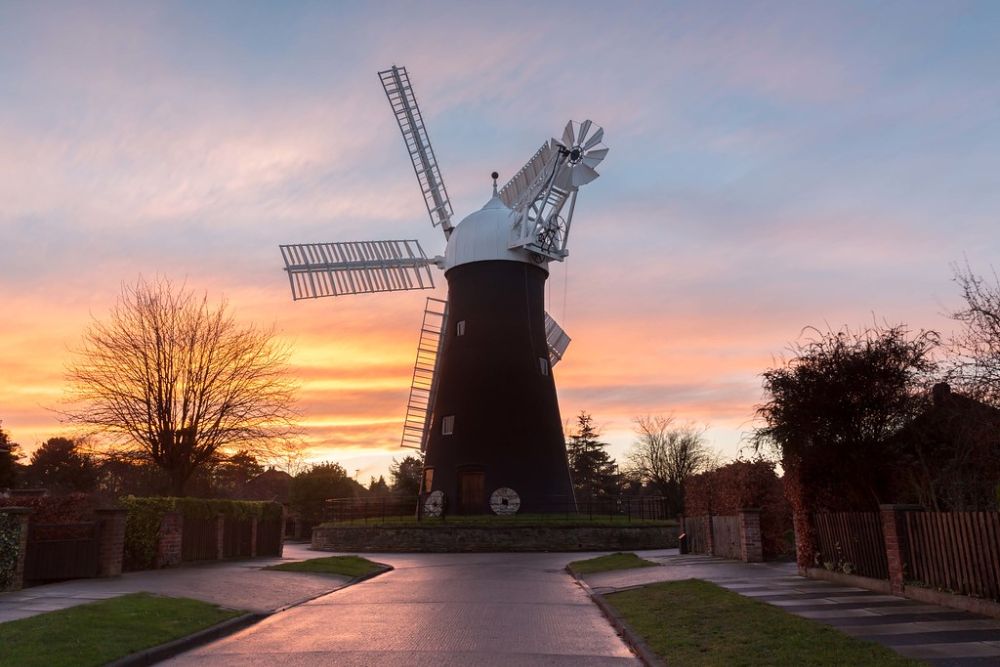There’s something deeply satisfying about spending the night in a building that once harnessed the wind to grind grain, pump water, or power entire communities, especially when that building offers 360-degree views and the kind of quirky charm that no modern hotel can replicate.
From Dutch polder mills that once kept entire regions from flooding to English tower mills that ground flour for medieval villages, these structures have been carefully converted into everything from luxury suites to cozy bed-and-breakfasts. Here’s a list of 20 historic windmills you can sleep inside, each offering the chance to spend the night in a piece of living history while enjoying views that most hotel guests can only dream about.
Brixton Windmill, London

This 1816 tower mill in South London has been converted into a unique bed-and-breakfast that puts you right in the heart of one of the city’s most vibrant neighborhoods. The mill’s cap still rotates with the wind, though now it’s more for show than function, and the original grinding stones remain as conversation pieces in the common areas.
innoSleeping here means waking up to panoramic views of London while staying in a building that once fed the growing population of Victorian Brixton.
De Roos Windmill, Delft
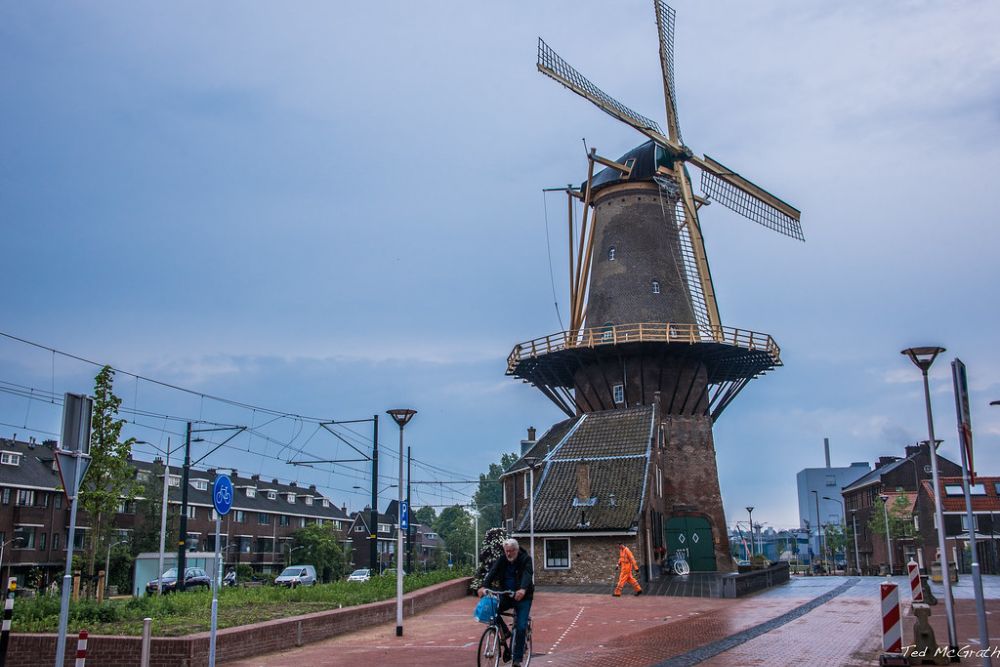
Built in 1679, this traditional Dutch windmill offers accommodation in what was once the miller’s quarters, complete with original wooden beams and traditional Dutch furnishings. The mill sits on the edge of Delft’s historic city center, giving guests easy access to the famous pottery workshops and charming canals.
The upper floors provide views across the Dutch countryside that look exactly like the landscapes in those old master paintings, except you’re sleeping in the middle of one.
Like Travel Pug’s content? Follow us on MSN.
Wicken Windmill, Cambridgeshire
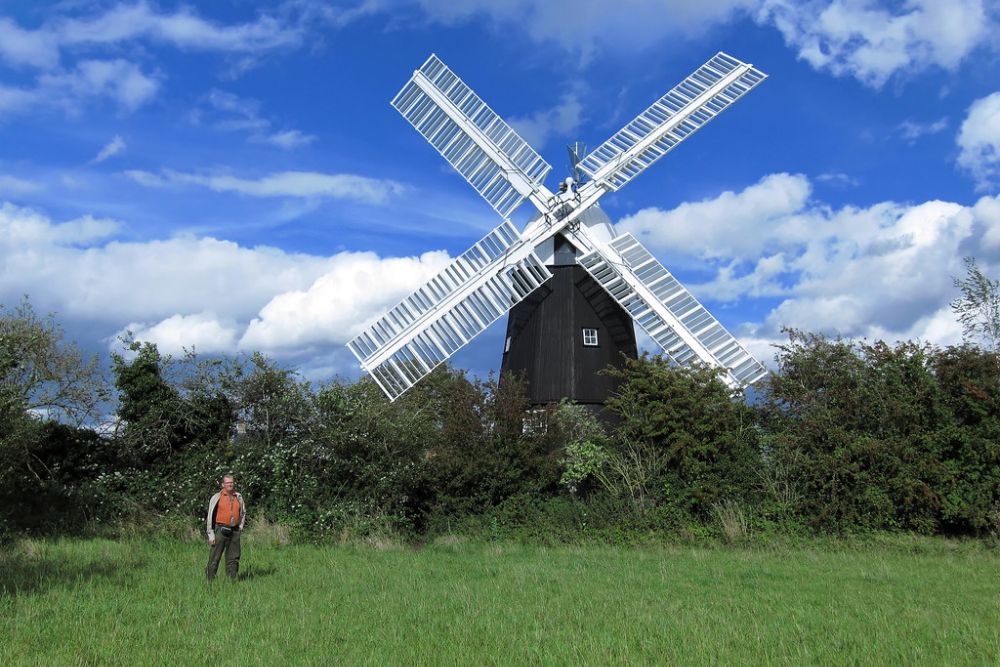
This 1748 smock mill offers bed-and-breakfast accommodation in the miller’s cottage attached to the windmill itself, with the option to climb the mill for spectacular views across the Cambridgeshire Fens. The mill is still in working order and occasionally grinds flour, so guests might wake up to the sound of grain being processed using methods that haven’t changed in centuries.
The location in the middle of rural England provides the kind of pastoral tranquility that makes you understand why people write poetry about the English countryside.
Moulin de la Galette, Montmartre
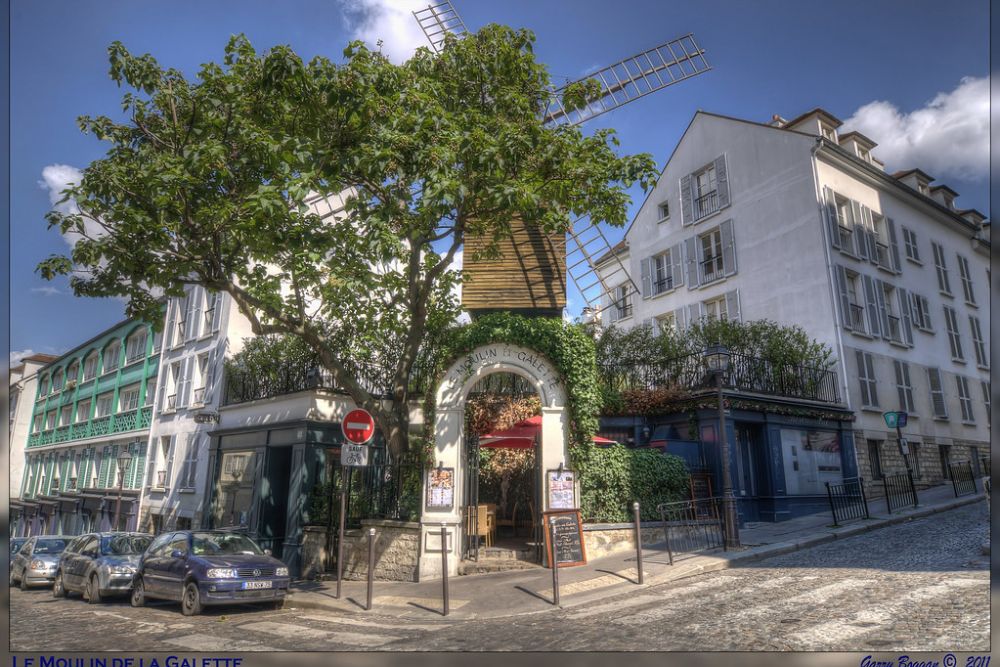
While the famous windmill that inspired countless Impressionist paintings no longer offers accommodation, the nearby Moulin de Radet has been converted into a charming boutique hotel that captures the bohemian spirit of historic Montmartre.
The building maintains its windmill architecture while offering modern amenities and views over Paris that include the Eiffel Tower and Sacré-Cœur. Staying here puts you in the heart of the neighborhood where Renoir, Picasso, and Toulouse-Lautrec once lived and worked.
Herringfleet Windmill, Suffolk
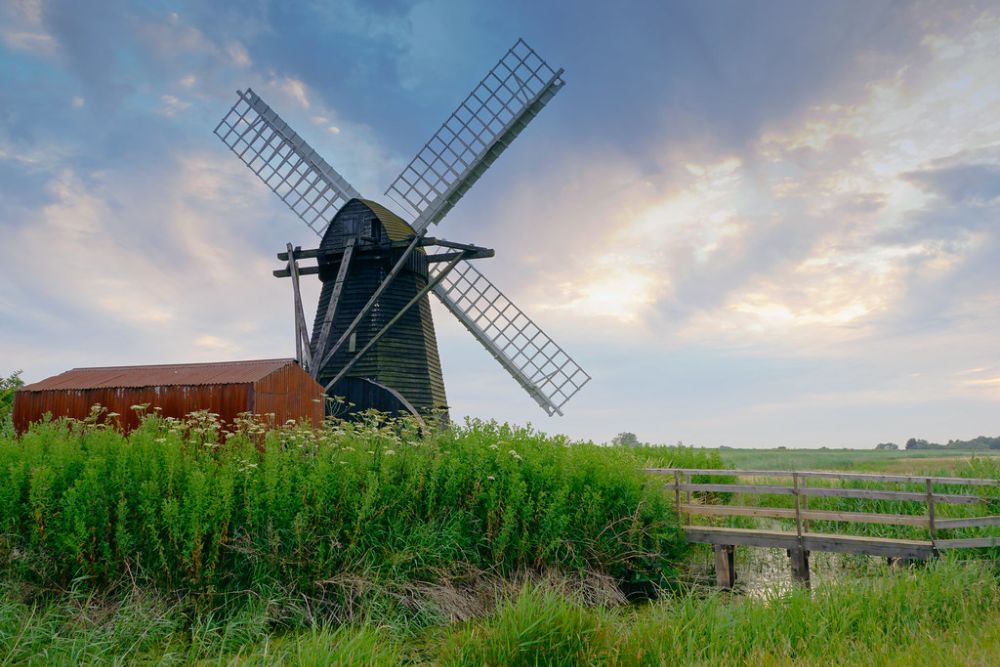
This 1820s drainage mill offers accommodation in a converted miller’s house with direct access to the windmill structure itself. The location on the edge of the Norfolk Broads provides guests with some of England’s best birdwatching opportunities right outside their bedroom windows.
The mill’s original machinery remains in working condition, and the sound of wooden gears and sails catching the wind creates a natural soundtrack that’s more relaxing than any white noise machine.
Like Travel Pug’s content? Follow us on MSN.
Mill House, Santorini

This converted windmill on the Greek island of Santorini has been transformed into a luxury villa that maintains the building’s distinctive cylindrical shape while adding modern amenities like a private pool and panoramic terraces. The white-washed exterior blends seamlessly with Santorini’s famous architecture, while the interior design incorporates the mill’s original stone walls and arched windows.
Waking up in a 200-year-old windmill with views of the Aegean Sea and volcanic cliffs makes every sunrise feel like a scene from a travel magazine.
Burnham Overy Staithe Windmill, Norfolk
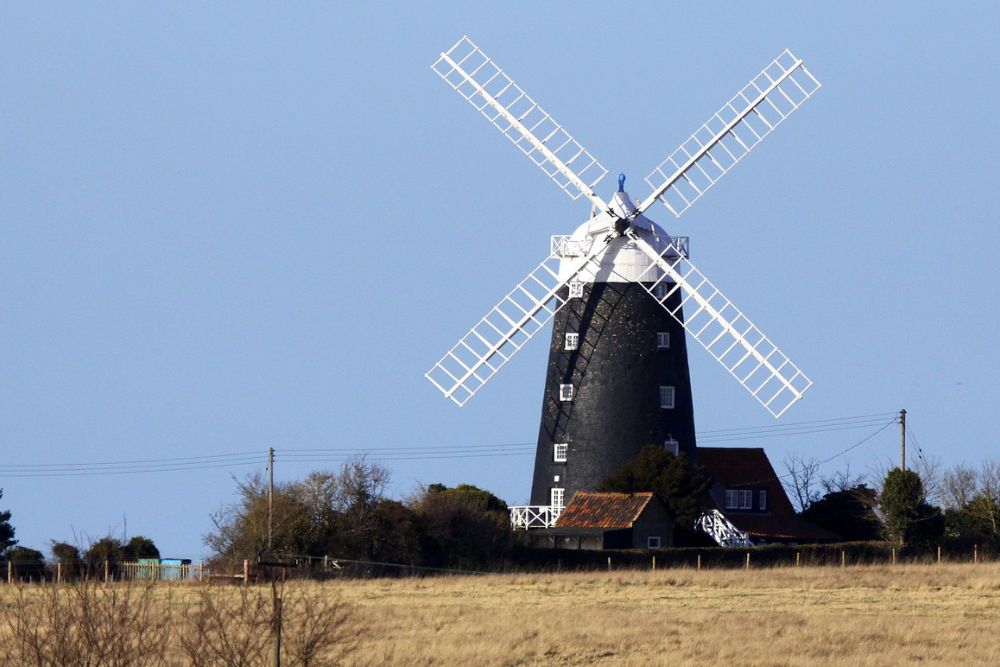
This 18th-century tower mill has been converted into a unique holiday rental that sleeps up to six guests across multiple levels of the historic structure. The mill sits in a coastal village where Nelson learned to sail, providing access to both Norfolk’s beautiful beaches and its inland waterways.
The circular rooms and spiral staircases create a living experience unlike any conventional accommodation, where every room offers different views across the Norfolk countryside and coast.
Kinderdijk Windmill, Netherlands
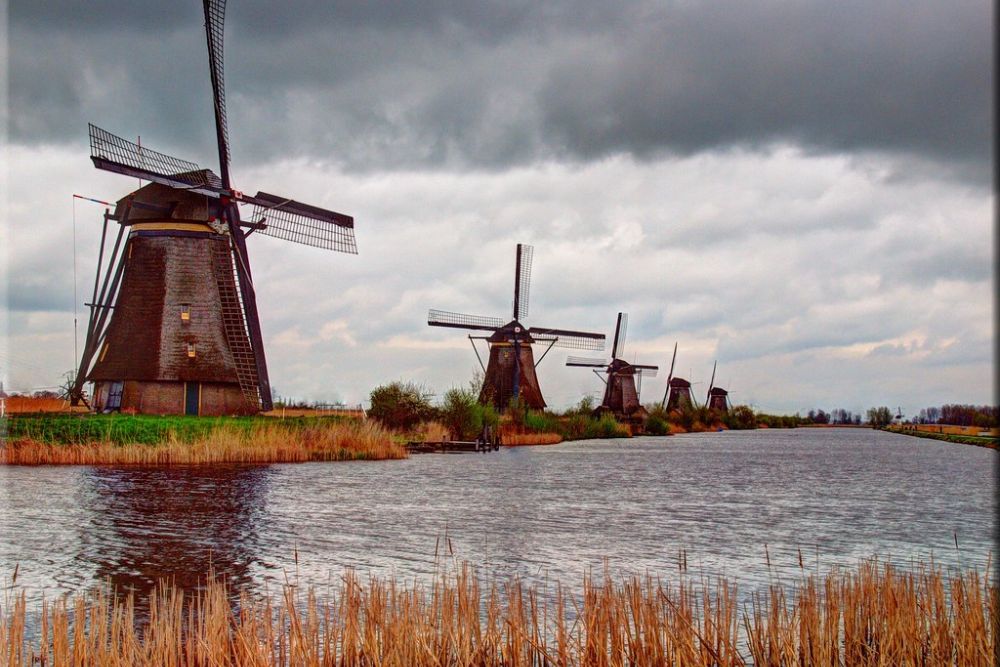
One of the 19 UNESCO World Heritage windmills at Kinderdijk has been converted into accommodation that provides an authentic Dutch polder experience. The mill sits in a landscape that represents over 1,000 years of water management, where the windmills kept the land from returning to the sea.
Guests can learn to operate some of the mill’s original machinery while staying in quarters that once housed the families responsible for maintaining these crucial flood defenses.
Torre del Visco Windmill, Finca Fuentepinilla
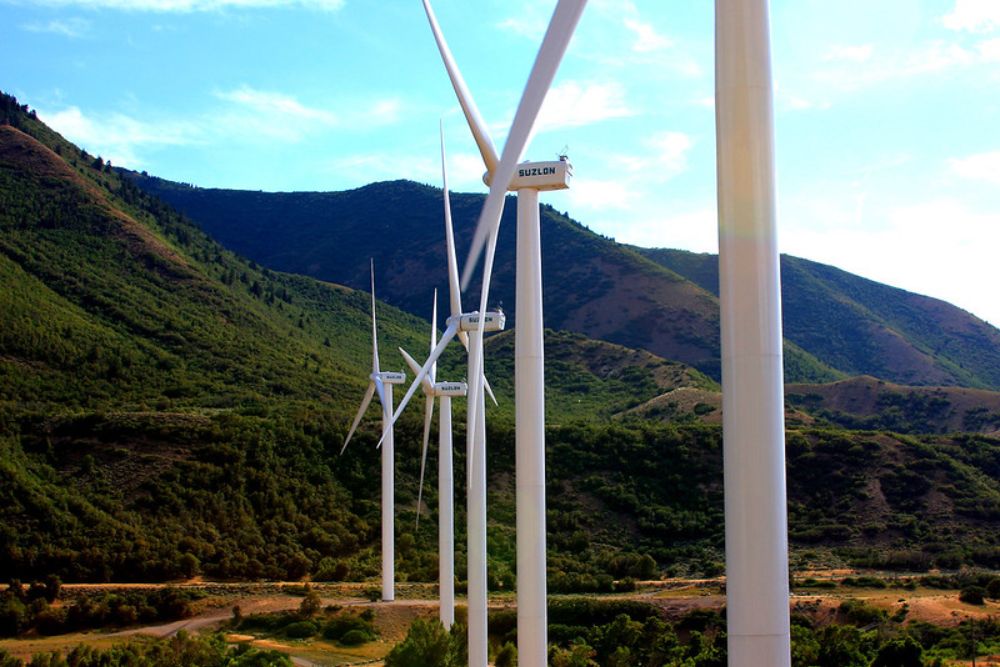
This restored Spanish windmill in Aragón offers accommodation within a working organic farm that produces everything from olive oil to artisanal cheeses. The mill has been converted into a luxury suite that maintains its historic character while offering modern comfort in one of Spain’s most beautiful rural regions.
The surrounding landscape of rolling hills and ancient olive groves creates the kind of pastoral setting that makes you understand why people talk about the romance of rural Spain.
Cley Windmill, Norfolk
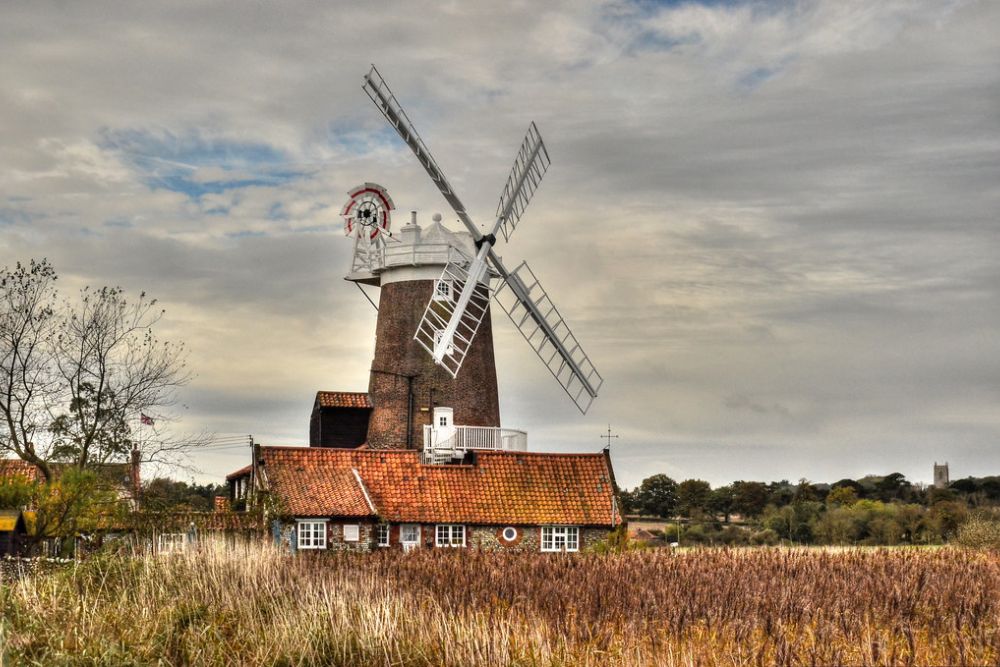
Built in 1713, this iconic coastal windmill has been converted into a bed-and-breakfast that’s become one of England’s most photographed accommodations. The mill sits on the North Norfolk coast where the land meets the sea, providing guests with views that encompass both marshland wildlife and North Sea horizons.
The building’s distinctive silhouette against the Norfolk sky has made it a favorite subject for landscape photographers, meaning guests are sleeping inside one of England’s most iconic views.
De Salamander Windmill, Leidschendam
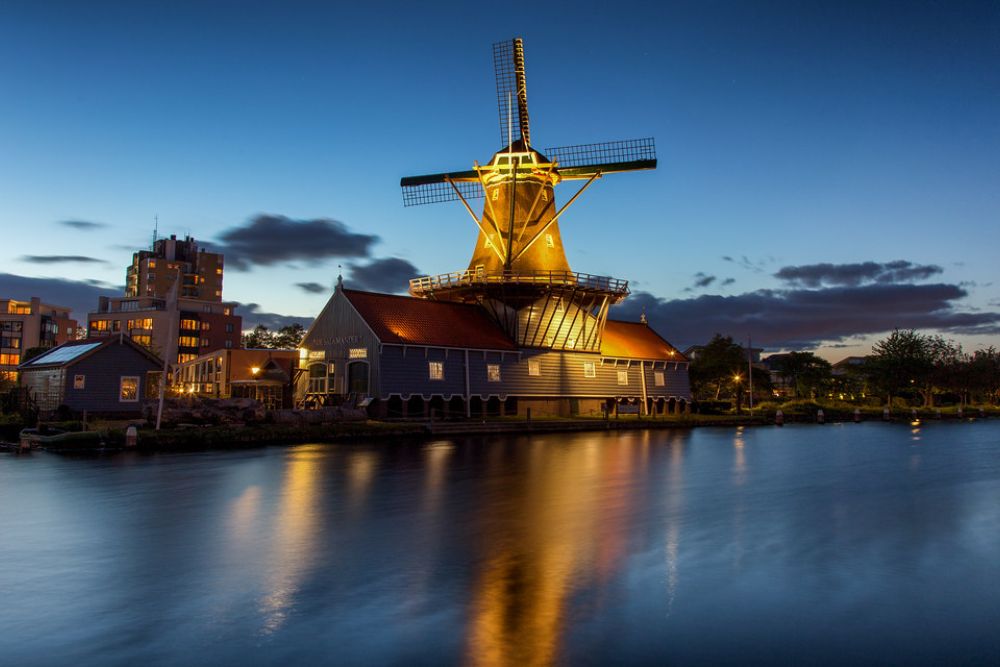
This 1693 flour mill has been converted into a restaurant and hotel, allowing guests to experience authentic Dutch mill life in a building that has been continuously operated for over 300 years. The accommodation includes rooms in both the mill itself and the adjacent miller’s house, with original features like exposed wooden beams and traditional Dutch tile work.
The mill still grinds flour using wind power, allowing guests to observe traditional milling techniques while staying in the quarters where generations of millers lived and worked.
Llancayo Windmill, Monmouthshire

This 1813 tower mill has been converted into a unique bed-and-breakfast that provides panoramic views across the Welsh countryside toward the Bristol Channel. The mill’s cap and sails have been restored to working condition, and guests can climb to the top for 360-degree views that encompass both the Welsh valleys and the English border.
The circular rooms and spiral stone staircase create an accommodation experience that feels more like staying in a medieval tower than a conventional hotel.
De Zoeker Windmill, Zaandijk

Located in the historic Zaanse Schans district, this 1672 oil mill offers accommodation in one of the Netherlands’ most important industrial heritage sites. The mill continues to operate as a working museum where traditional oil extraction methods are demonstrated daily, giving guests a front-row seat to living history.
The location provides easy access to Amsterdam while offering the authentic Dutch countryside experience that most tourists only see in postcards.
Stocks Windmill, Worcestershire

This 1875 tower mill has been converted into luxury accommodation that maintains the building’s industrial heritage while providing modern comfort in the English countryside. The mill sits in working farmland where it once ground grain for local villages, and the surrounding landscape provides guests with walking opportunities through traditional English agricultural areas.
The accommodation includes the mill’s upper levels, where sleeping among the original machinery creates an industrial archaeology experience unlike any conventional hotel.
Moulin de Dosches, Champagne

This restored French windmill in the Champagne region offers accommodation surrounded by the vineyards that produce some of the world’s most famous sparkling wine. The mill has been converted into a luxury guesthouse that maintains its historic character while providing access to champagne tastings and vineyard tours.
The combination of industrial heritage and viticultural tradition creates an accommodation experience that captures the essence of French rural luxury.
West Blatchington Windmill, Brighton
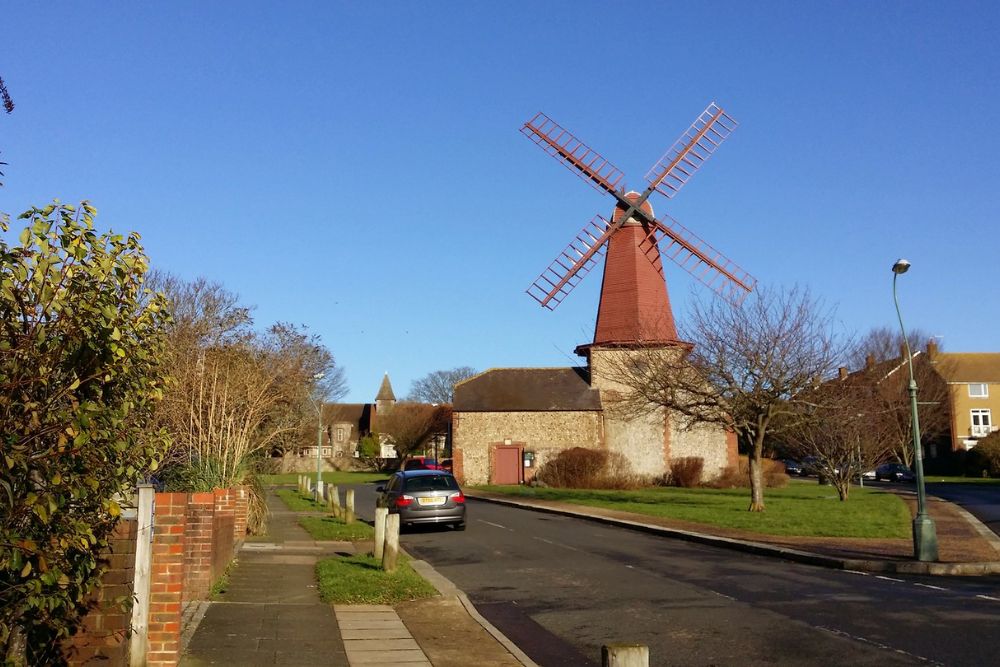
Built in 1820, this English tower mill has been converted into a unique bed-and-breakfast just outside Brighton, providing countryside tranquility within easy reach of the south coast. The mill’s original machinery remains in place, and guests can climb to the cap for views across the South Downs toward the English Channel.
The location provides the perfect base for exploring both Brighton’s urban attractions and the rural beauty of Sussex.
De Bleeke Dood Windmill, Zaandam
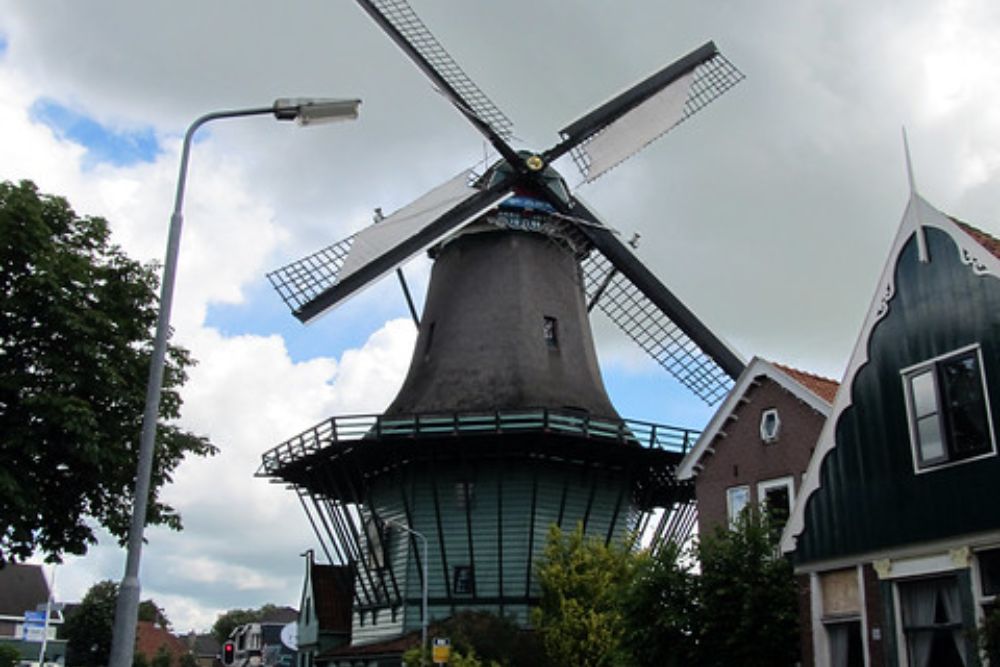
This 1656 sawmill represents one of the oldest industrial windmills still in existence, now offering accommodation in the miller’s quarters alongside demonstrations of traditional woodworking techniques. The mill is situated in the Zaan region, where wind-powered industry first developed, offering guests an insight into the technological innovations that made the Dutch Golden Age possible.
Staying here means sleeping in a building that helped create the economic foundation of modern Netherlands.
Stow Windmill, Lincolnshire
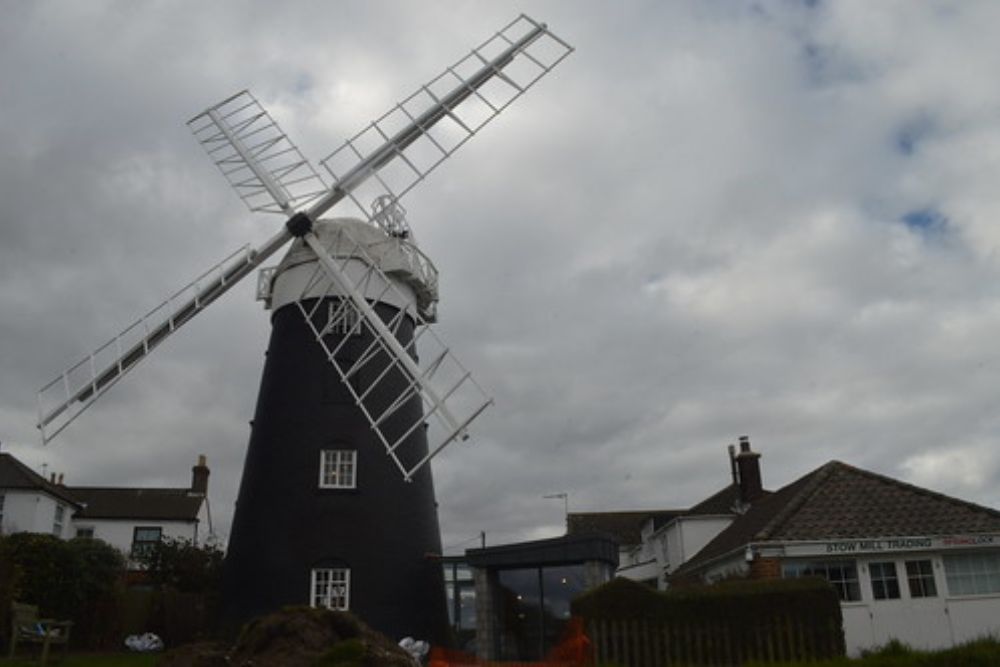
This 1878 tower mill offers accommodation in a structure that represents the final era of working windmills in England, complete with original machinery and panoramic views across the Lincolnshire Wolds. The mill has been carefully restored to maintain its industrial character while providing comfortable accommodation for guests interested in experiencing authentic rural English heritage.
The surrounding agricultural landscape provides the kind of pastoral setting that inspired generations of English landscape painters.
Moulin de Daudet, Provence
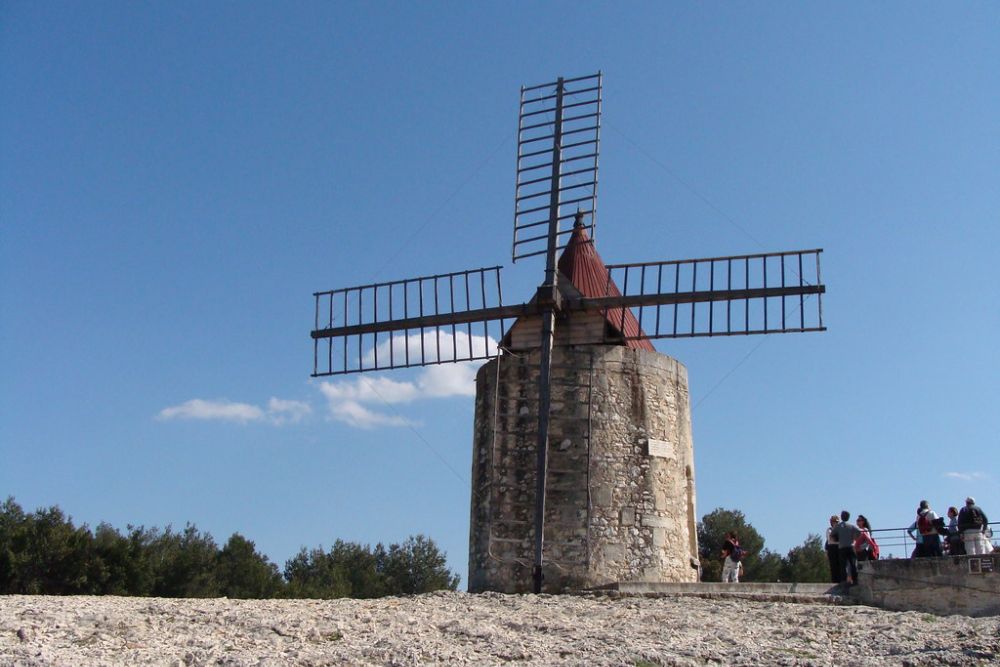
While Alphonse Daudet’s famous windmill doesn’t offer overnight accommodation, nearby restored mills in Provence provide similar experiences in buildings that inspired some of French literature’s most beloved pastoral works. These mills sit among lavender fields and olive groves that create the quintessential Provence landscape, offering guests the chance to wake up in a setting that has attracted artists and writers for centuries.
The combination of literary heritage and Mediterranean landscape makes staying in a Provençal windmill feel like living inside a French novel.
Holgate Windmill, York
This 1770 tower mill has been converted into unique accommodation that provides views across historic York while maintaining the building’s original industrial character. The mill sits on the edge of York’s city center, giving guests easy access to medieval streets and Roman walls while staying in a building that once served the city’s growing population.
The combination of urban convenience and historical authenticity makes this one of England’s most distinctive accommodation experiences.
Living History at Wind Speed
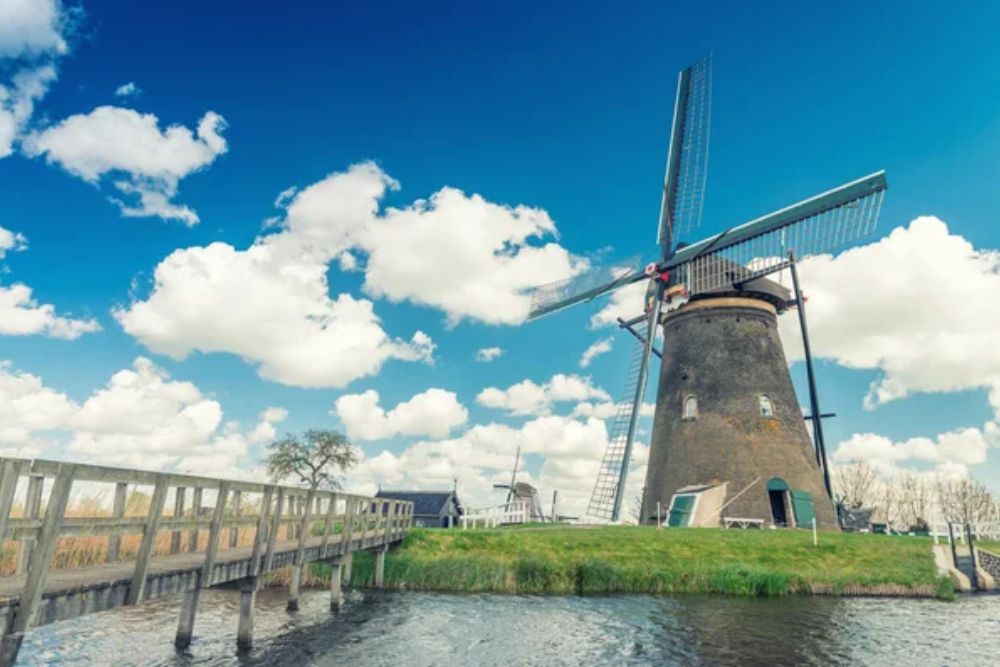
These converted windmills offer more than just unique places to spend the night; they provide a direct connection to the ingenuity and craftsmanship that powered pre-industrial communities across Europe and beyond. Every creaking timber, every view from a cap room window, and every night spent listening to wind through ancient sails create an understanding of how these buildings shaped the landscapes and communities they served.
The fact that these structures have survived centuries of technological change and now serve new purposes as accommodation demonstrates both their robust construction and their enduring appeal to people seeking authentic experiences in an increasingly artificial world. Sleeping in a windmill means spending the night inside a machine that once harnessed natural forces to sustain human life, and waking up with a deeper appreciation for the creativity and determination of the people who built them.
More from Travel Pug

- 20 Best Beach Towns in the Carolinas
- 13 Destinations Where Tourists Regularly Regret Their Trip
- 20 Things You Actually Get in First Class
- 20 Small Airports With Aviation Museums
- 20 Places in the U.S. That Are Perfect for a Reset Trip
Like Travel Pug’s content? Follow us on MSN.

